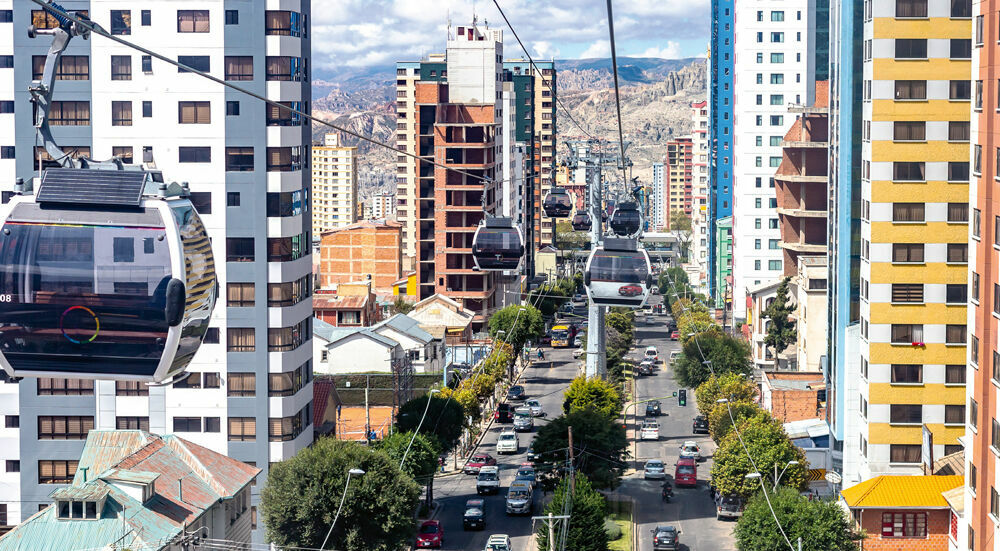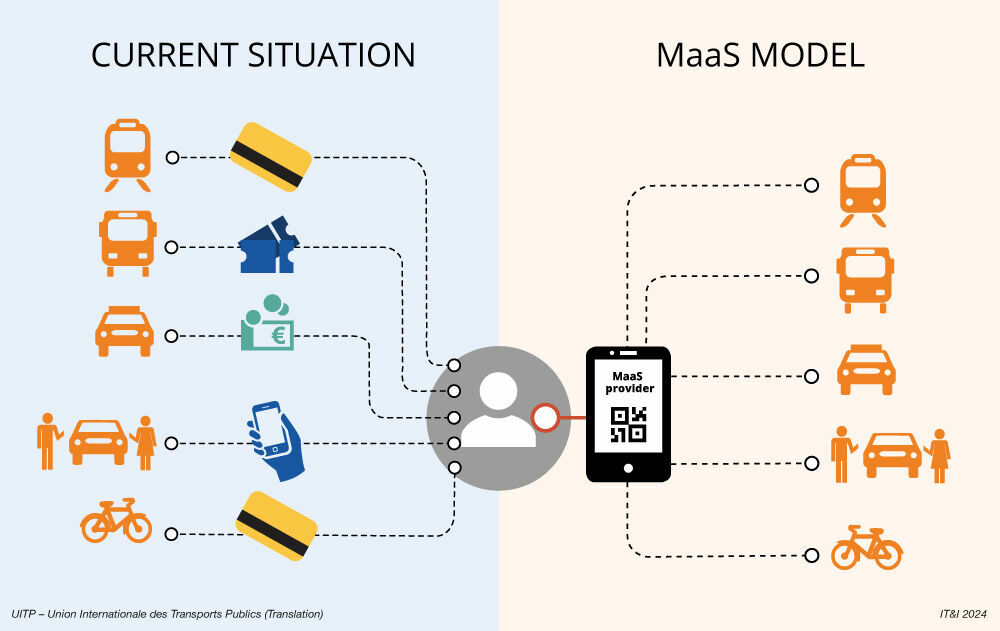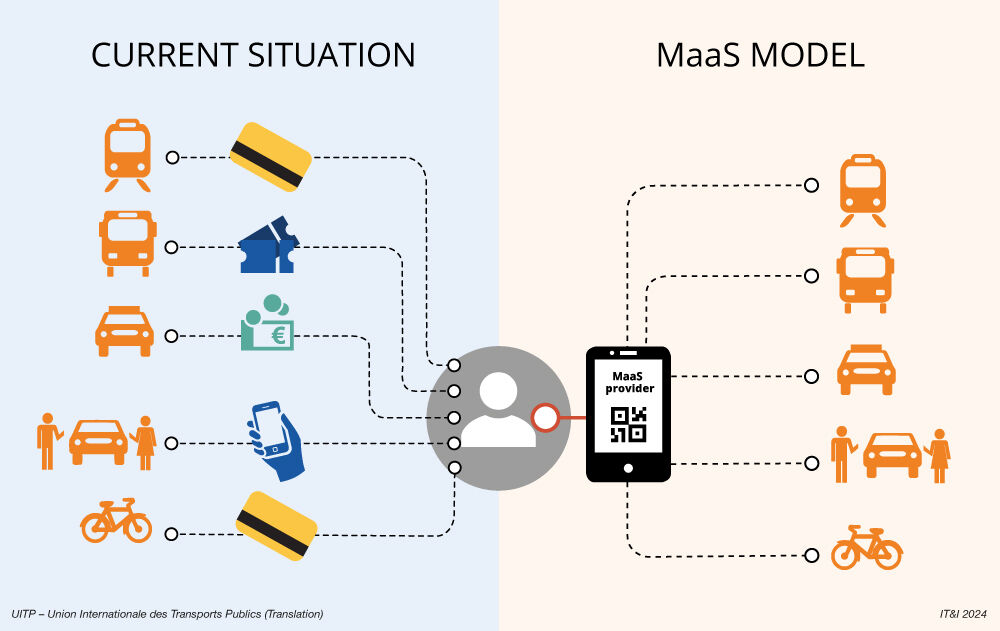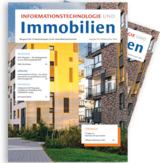Urban Mobility – networked transport for the future

The concept of urban mobility also includes aspects such as the efficiency of the transport system, accessibility for all population groups, the environmental compatibility of the means of transport and transport planning in urban areas. Urban mobility is therefore a vision of the future. This includes demographic change in society, increasing urbanisation and the opportunities offered by digitalisation. These aspects are constantly changing individual mobility requirements. Specifically, the focus is on alternative drive options and electromobility, autonomous driving, adaptive and sensitive driver assistance systems, data networking and new forms of interaction and communication, as well as the adaptation of mobility requirements in the context of climate change.
The historical development of different forms of transport
Urban mobility is not just a concept of the present or the future. Over the past centuries, people have always thought about how to organise sustainable transport for people and goods. There are a few examples of this. The world-famous Wuppertal suspension railway replaced the horse-drawn tramway because, at the end of the 19th century, there were no technical alternatives along the Wupper river, in an urban area with 400,000 inhabitants, to make local transport user-friendly in the dense valley and hillside location. Conventional trams and underground railways did not appear technically feasible due to the special location.[1]
In other places, the construction of underground railways shifted passenger transport below ground. It began 160 years ago with the London Underground, which revolutionised and accelerated transport in metropolises for millions of their inhabitants.
In the past, towns and cities were founded along streams and rivers. Urban development was inconceivable without shipping for the regional transport of building materials, timber, grain and foodstuffs, thus promoting the attractiveness of large cities. Even today, ferries are still used to develop and offer passenger transport in metropolises on the coasts – an integral part of cities such as Vancouver, Seattle, Sydney and Venice.
Urban mobility in our modern age
Today, the technical possibilities are much more advanced and allow the implementation of a wide range of ideas. Innovation knows no bounds in cities like Hong Kong. Hong Kong’s network of pedestrian bridges connects office buildings, hotels and shopping centres with ferry docks, underground stations, trams and buses via elevated walkways. Unlike underground trains, pedestrians do not travel below ground, but several metres above Hong Kong’s dense road traffic. Escalators can be found everywhere where slopes are developed.[2] This includes the world’s longest open-air escalator at 800 metres, which transports over 200,000 people a day to office buildings, restaurants, cultural institutions – such as churches and mosques – and residential complexes.[3]
You can also enjoy futuristic images in Tokyo. There, the pedestrian areas between the underground railway lines and the urban development are built on separate levels. These intermediate levels are linked over long distances to the underground junctions and have their own shops and access to offices and shopping centres.
The urban cable car network in the Bolivian capital La Paz is particularly spectacular. The Austrian company Doppelmayr, which also provides many ski slopes in Europe with gondolas, was commissioned to build it. Over 30 kilometres long and spread over ten lines, it looks like a kind of underground network in the air. The cable car runs at one-minute intervals without the need for a timetable. Their transport performance and the time savings for passengers are impressive. There is no such thing as traffic jams or transport hubs here. The amazing thing about this is that the planning and construction of a cable car can be completed quickly. The costs are low compared to other means of transport and are quickly amortised. Other cities can certainly learn from this example![4]
The mega system of intelligent traffic management
In the following analysis, urban mobility is not necessarily understood as the technical optimisation of transporting people in metropolitan regions. We tend to view the networking of different modes of transport as a transport ecosystem for the mobility needs of citizens who can use trams, underground and rapid transit systems, buses, their own or rented vehicles, taxis, bicycles or pedestrian routes in a climate-friendly way. All vehicles should be predominantly low-emission and electrically powered.

Figure 1: In the future, all transport options should be networked and displayed on one platform: Mobility as a Service (MaaS).
 Figure 1: In the future, all transport options should be networked and displayed on one platform: Mobility as a Service (MaaS). |
These transport services are embedded in digital platforms that provide citizens with complete transparency of all transport systems. This also includes offers from bike and car sharing providers. The spontaneous sharing of vehicles in particular meets the requirements for more individual mobility for citizens. Experts already speak of a location factor when the many facets of transport are offered in an uncomplicated manner. Urban Mobility does not end at the borders of urban regions, but also includes neighbouring rural regions.
One key objective always remains the same, and that is to increase mobility and reduce CO2 emissions. These ideas are no longer determined solely by local or regional transport companies, but increasingly also by software providers and their solution offerings. There are integrated apps that can be downloaded. They network all the options for getting from A to B via mobility hubs or interchange stations. This means that they show the best route depending on location and time, whether this involves the tram, the bus, a bike or a taxi. The fares and bookings are also shown. This bundling as Mobility as a Service (MaaS) makes it easier to get around, especially in areas where public transport is less developed. It combines various means of mobility such as public transport, car, bike and e-scooter sharing or taxi services on a single platform.
Ultimately, autonomous vehicles will be the future. Not only cars, but also trams, underground trains and buses will be able to do without drivers and thus also help to address the labour shortage. Everything will enable more individualised mobility. Artificial intelligence will make public transport more efficient and apps with contactless ticket and payment systems will make using local and regional transport even easier. Transport services with autonomous shuttles or taxis are less cost-intensive than previous transport solutions and will therefore be accessible to more people.[5]
More environmental awareness and resource conservation
Urban Mobility includes environmental compatibility and resource conservation. The Almost Zero Waste principle increases the sustainability of mobility, an example being bicycles made from recycled plastic. Vehicle-to-grid technology harmonises the energy requirements of electric vehicles and local power grids. Charging-capable vehicles will not only draw electrical energy from the grid but, as part of an intelligent energy system, will also be able to feed energy back into the grid or for private consumption via charging stations.
The car-sharing principle in particular optimises the use of different modes of transport. According to empirical studies, private vehicles are only needed for an average of one hour a day in total. From this point of view, car sharing makes far more sense than owning your own vehicle. Autonomous vehicles can not only take a private user to their destination, but can also be used in parallel by other passengers travelling in similar directions. One self-driving car can replace up to ten private cars. This in turn results in a better traffic flow, which can lead to less traffic and less congestion.[6]
Conclusion for Germany
In the Federal Republic of Germany, the metropolitan regions have made varying degrees of progress with these concepts, but urban planners are all moving in the same direction. What has already been achieved is a local and regional transport ticket that connects the different areas of Germany. The Deutschland-Ticket, with a monthly price of no more than 49 euros, motivates people to actually use the wide range of local and regional public transport services. This saves economic and ecological resources across regions.
Other measures to promote regional mobility could include integrating cycle paths and pedestrian zones into the urban transport network, promoting carpooling through digital platforms and creating mobility hubs that enable seamless transitions between different modes of transport. Such initiatives can strengthen cross-regional connections and further improve the mobility of citizens.
- https://de.wikipedia.org/wiki/Wuppertaler_Schwebebahn
- https://de.wikipedia.org/wiki/Fußgängerbrücken_in_Hongkong
- https://de.wikipedia.org/wiki/Central_Mid-Levels_Escalator
- https://lapaz.doppelmayr.com/
- https://www.openpromos.de/magazin26_artikel07/
- https://www.staedtetag.de/files/dst/docs/Presse/2023/Stadt-der-Zukunft-FAZ-vom-151223.pdf
Author:

Ernst Hubert von Michaelis
Sales Representative
PROMOS consult
Other articles by this author:
- Article "The future of urban planning – the sponge city"
- Article "Urban Mobility – networked transport for the future"
- Article "We need to create additional housing – but how?"
- Article "The metropolis of the future – a discussion article"
- Article "Co-working – Find a workspace and network at the click of a mouse"
- Article "Less is more – an alternative way of living"
- Article "Micro living – the future of living as a new asset class"
- Article "The digitisation of retail – in-store, online, mobile... Wasted opportunities or risks?"
- Article "Accounting for leasing relationships in accordance with the IFRS 16 standard with low administrative expense"
- Article "Working from home is passé... the new trend is working on the move"
- Article "All that is possible with individual mobility"


